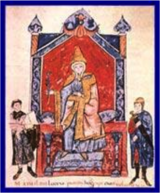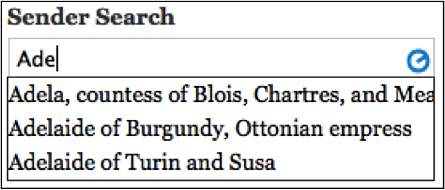Keeping Alive A Digital Repository of Medieval Letters
One of CCNMTL’s longest running projects, an online collection of letters from the Middle Ages, just turned fourteen. Keeping a digital project alive and well that long is not as simple as it may seem.

Epistolae is a freely accessible, online collection of letters written to and from women in the Middle Ages. This open educational resource has been developed and curated by Joan Ferrante, Professor Emeritus of English and Comparative Literature, of Columbia University. Working with Columbia Center for New Media Teaching and Learning (CCNMTL), the original Epistolae project was launched in February 2000, fourteen years ago! Having just completed its third major update, Epistolae is ready to support its teaching and learning objectives for another 14 years.
The overhaul of Epistolae was an exercise in extracting a still growing repository from a less supported, aging platform (TurboGears), and re-launching the site on a stable, actively developed, open-source platform (Drupal). This process presented a number of unique challenges, which all had to be overcome, with minimal downtime, given Epistolae’s status as an actively visited website, averaging approximately 150 visits daily:
- Epistolae is an actively visited site.
- The two platforms, TurboGears and Drupal, run on different databases.
- Many user and system generated errors were introduced to the database over time.
- Preservation of the site's URL structure was essential to ensure user’s permalinks were still active.
In addition, converting the site to Drupal presented the opportunity to introduce improved functionality for data entry and user usability within the site.
The difference in databases was a major hurdle to be overcome. The data had to be extracted from TurboGears in the form of a .csv file. CCNMTL developed a process for downloading these 1500+ unique data entries, many of which had several paragraphs worth of content in both Latin and English, into a format that preserved the structure of the entries. These files were then fed into the new Drupal database utilizing Drupal’s Feeds module, producing the base for the new site. However, before the data could be pulled into Drupal, it needed to be cleaned as much as possible.
Over the course of Epistolae’s 14-year existence there had been a number of anomalies introduced into the database, through both system and user error. As the original Epistolae platform grew older, its interaction with different web browsers was not consistent. This caused some data entries to be entered multiple times (due to the user not knowing if the entry had properly saved the first time) as well as irregularities being introduced, such as line breaks in the data being saved and displayed as code (“\n”, “\r”, etc.). Through the use of Google Refine and manual inspection, all of these anomalies were found and corrected prior to the database being uploaded to Drupal.
Lastly, the sites framework had to be rebuilt within the Drupal environment. This presented an opportunity to extend the sites functionality, specifically regarding the relationship between the letters and the women who sent and received them. In the original database the relationship was built within a matrix, indicating which letter was associated with each woman.
Within Drupal, the relationship between letter and woman is maintained using Drupal’s Entity Connect module, which dynamically links the two entities upon entry into the database. This removes the need for a complex matrix to maintain the relationships and allows the system to automatically link new letters to the appropriate woman, as they are introduced to the system.
The upgraded platform also allowed for the introduction of more robust search functionality, within woman’s bios and letters. When searching specific fields, such as a woman’s name or a letter’s sender field, the system will rapidly present all possible completion options that exist within the database. This allows the user to be more efficient with their searches.
Updating a project that has been around for almost as long as CCNMTL presents some very unique challenges. But the process is not impossible and allows for a rich and well-used database, to continue thriving for many more years to come. The scholars, researchers, and students that have the opportunity to access this repository of texts, translations, and background information about women engaged in correspondence in the Middle Ages, will appreciate not noticing any of these unique challenges and instead will be able to continue accessing the site, with an improved, easy to use experience.


